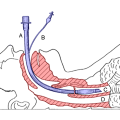Lumbar Puncture
Date: <____>
Time: <____>
Indication: Altered Mental Status
Resident: <____>
Attending: <____>
A time-out was completed verifying correct patient, procedure, site, positioning, and special equipment if applicable. The patient was placed in the <LEFT/RIGHT> lateral decubitus position in a semi-fetal position with help from the nursing staff. The area was cleansed and draped in usual sterile fashion. 1% lidocaine was used anesthetize the surrounding skin area. A <20-gauge 3.5-inch> spinal needle was placed in the <L3-L4/L4-L5> interspace. Clear cerebral spinal fluid was obtained and the opening pressure was noted to be <?cm>. Four tubes were filled with 4 mL of CSF. These were sent for the usual tests, including 1 tube to be held for further analysis if needed. <Attending/Resident> was present for the entire procedure
Estimated Blood Loss: <____>
The patient tolerated the procedure well and there were no complications.
Other procedure note examples:
- Endotracheal Intubation
- Central Line (CVC) Access
- Arterial Line
- Lumbar Puncture
- Thoracentesis
- Thoracostomy (Chest Tube)
- Swan-Ganz Catheter Placement
Also, thank you to my two favorite websites for helping me write notes in the hospital:







 My name is Andrew and I am a first year resident training to be an ophthalmologist. I created ShortWhiteCoats to provide medical students, residents, and the public with all the information I spent so many hours looking for during medical school.
My name is Andrew and I am a first year resident training to be an ophthalmologist. I created ShortWhiteCoats to provide medical students, residents, and the public with all the information I spent so many hours looking for during medical school.







1 comment
Michael
April 10, 2017 at 11:57 am (UTC -4) Link to this comment
Please use a 25ga. nontraumatic tip spinal needle for this procedure (via a 18ga introducer needle). 20 and 22ga Quinke tip (cutting tip) are associated with avoidably high post dural puncture rate. And….you don't want to treat that if it can be avoided. The manometer reading amongst ALL n eedles will be the same, albiet the narrower gauge will take a minute longer to equilibrate. A worthwhile exchange. Ask your anesthesia department for the non cutting tip 25 gauge spinal needles.